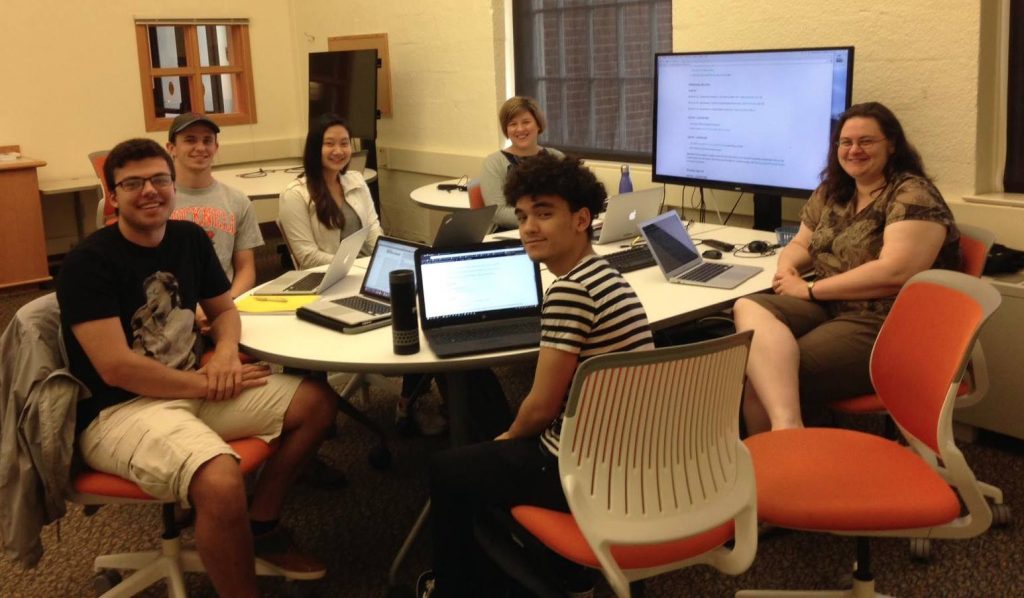After months of planning and anticipation, DSSRF 2017 got off to a great start this past week. Our four fellows are full of energy, enthusiasm, and curiosity. One of the things that’s interesting about our cohort is that Tyler and Justin have some background in digital scholarship and digital humanities, while Rennie and Minglu are completely new to the field. Yet they’ve all already shown a willingness to engage in deep discussions with each other about their project ideas, making suggestions about different methods and tools that could be useful. One of my favorite examples of this came when Rennie was explaining his project idea, which involves analyzing player performance and overall team performance in the NHL during the 2016-17 season. He intends to use statistics and data visualization techniques in his project, but Justin also suggested the possibility of analyzing footage from games using video annotation software as another means of gathering data. These kinds of interactions happened many times over the course of the week, and the students have modeled honest, thoughtful feedback with each other.
Week 1 was a bit of a whirlwind in terms of content, and we challenged the students to think deeply about the advantages, challenges, and values of digital scholarship. We watched Miriam Posner’s excellent video, “How Did They Make That?”, which helped us gain a better understanding of how we move from a research question to applying digital tools and methods to answer that research question. And while we haven’t started our in-depth training with various tools yet, we asked students to find a tool (one we won’t be learning) that might apply to their research area and demonstrate it for the group.
- Tyler showed us Lexos, a powerful tool for text cleaning and basic text analysis.
- Rennie demoed RAWGraphs, an online suite of data visualization tools.
- Minglu compared StoryMap JS and ESRI StoryMaps, both which allow for a combination of mapping and other elements.
- Justin introduced us to ELAN, a multimedia annotation tool.
Finally, inspired by a reading of the Digital Humanities Manifesto 2.0, we gave our students 45 minutes on their own to write (as a group) their own digital scholarship manifesto. Their only prompt was these two questions: What are your goals for the summer as a cohort? How will you support one another in these goals? You can read what they wrote on the main page of this website. I don’t want to speak for Courtney, but I was deeply impressed with the thoughtfulness of their message, their commitment to supporting each other, and their openness to learning throughout the process. I think we can all learn something from their closing statement:
“We will fail. We will reject that failure carries negative connotations. We will succeed. We will disagree, and we will become stronger as a group because of this. We will gain knowledge in areas in which we have never before dabbled. Life is richest when we become good at many things, and there is no doubt our lives will be enriched through this program.”
And now we move on to Week 2, when we dive into the world of text analysis and TEI!

